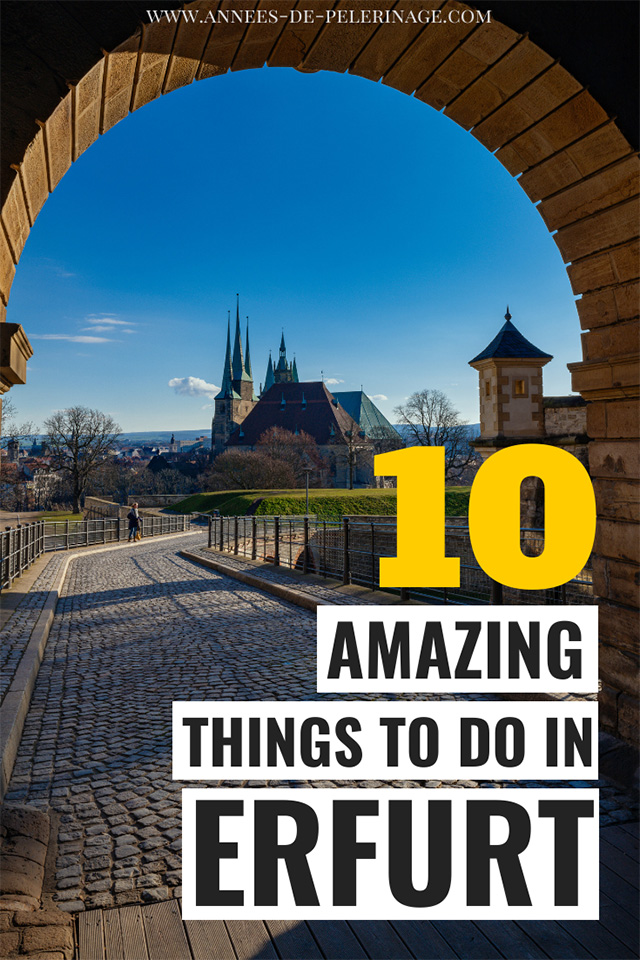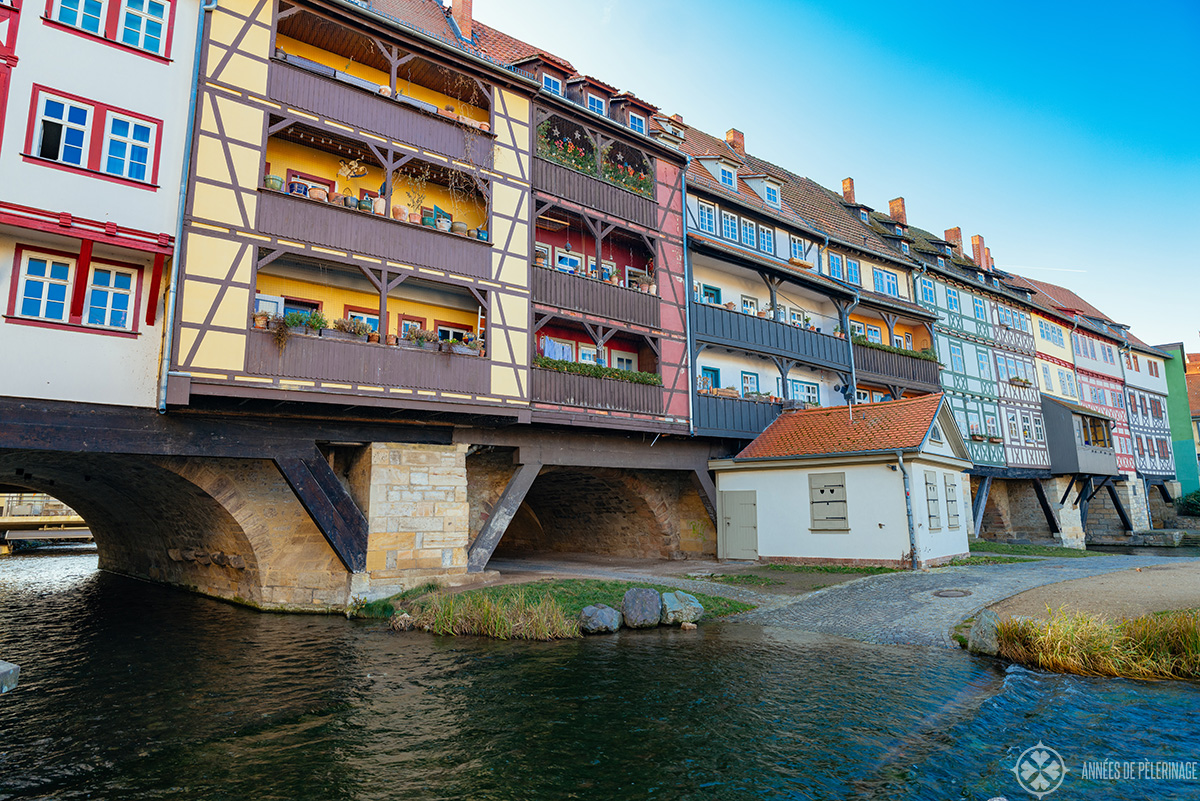
A list of the top tourist attractions and places to visit in Erfurt, the capital of Thuringia
Erfurt is a young and vibrant city with a visible history of more than 1,000 years. With a population of barely 200,000 people, it might not be the biggest capital of a German state, but it’s certainly one of the most charming. The old town with its many half-timbered houses is nothing short of stunning and there are actually quite a lot of things to do in Erfurt.
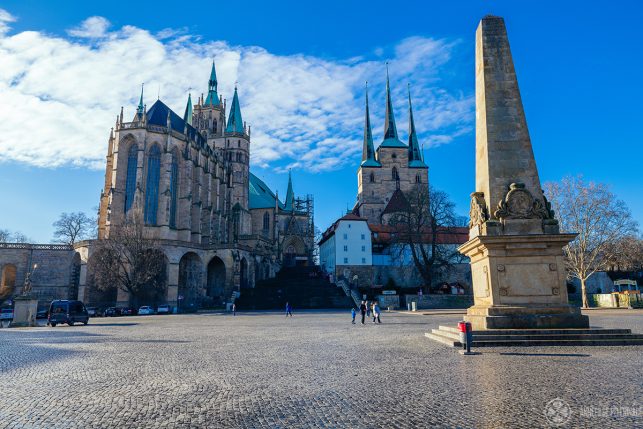
I recently revisited the capital of Thuringia and thought I’d share my impressions with you. What I particularly liked about Erfurt was the fact it was not as crowded as Berlin or Munich, where it often feels like you are one small fish in an ocean full of tourist groups.
You should also be aware that beautiful Weimar, a double UNESCO World Heritage site, is only 20 minutes away. It’s even more spectacular than Erfurt. You can read my Weimar guide here. So, you might even want to stay a night!
Either way, here is my list of the top things to do in Erfurt.
1. Krämerbrücke & old town
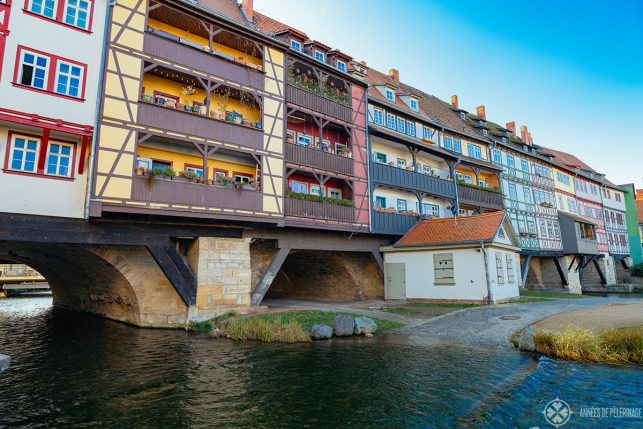
The Krämerbrücke (roughly translates chandler’s bridge) is the most iconic landmark in Erfurt. It’s both the oldest secular building in town and the longest inhabited bridge in Europe (yes, even older than the Ponte Vecchio in Florence). Half-timbered houses flank a beautiful cobblestone street.
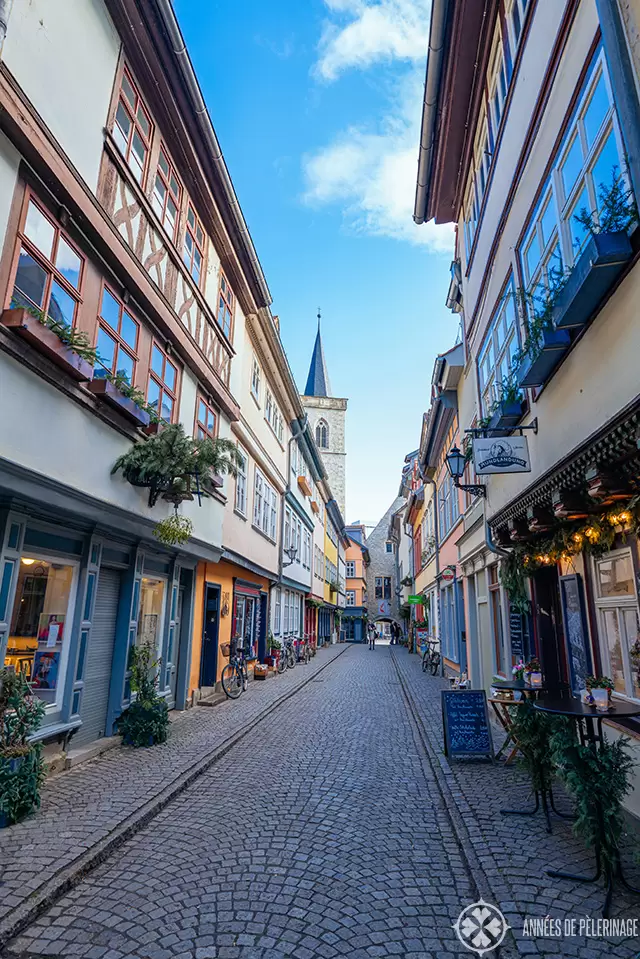
Left and right you’ll find shops where you can buy an authentic souvenir or two. It’s just such a lovely place. The bridge was constructed in 1325, though most of the houses “only” date to the 15th century or later. If you happen to be in Erfurt on the third weekend in June, you’ll be able to partake in the annual Krämerbrücken festival.
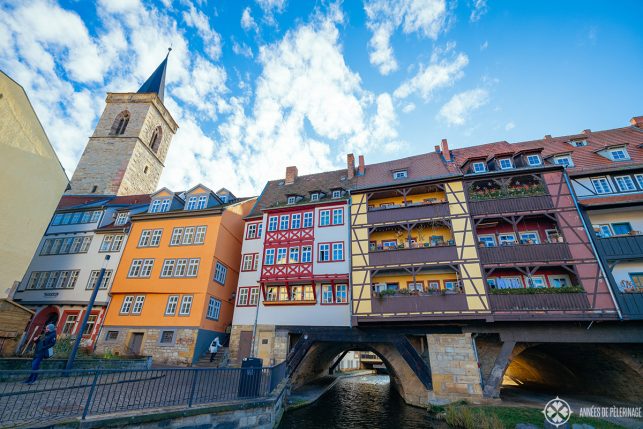
Note: Don’t miss the St. Aägiden’s tower at the far end of the bridge. Climb it for a beautiful view of the old town!
2. Erfurt Cathedral
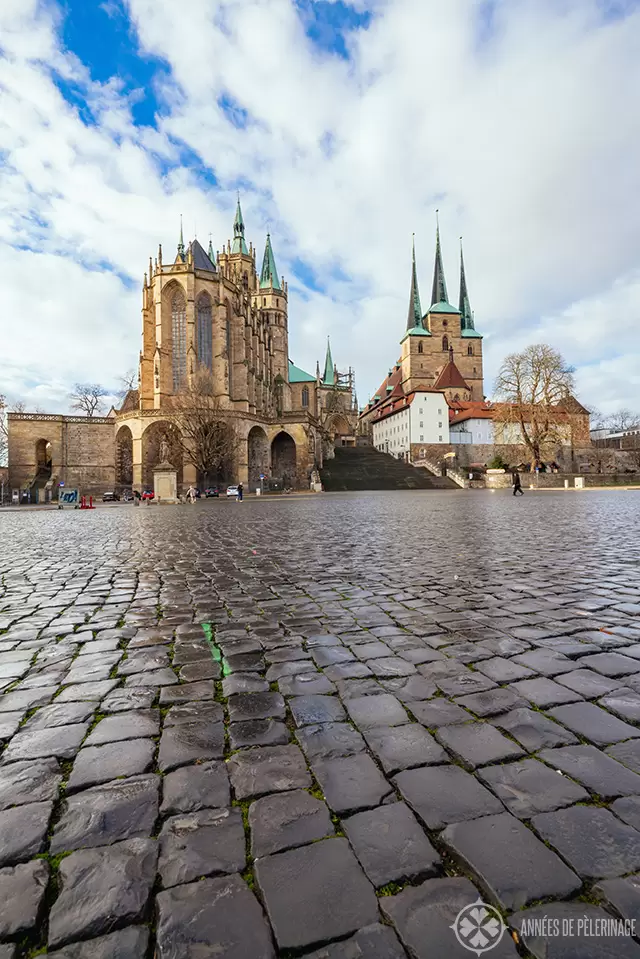
The Erfurter Dom is both the oldest and the most important church in Erfurt. Legend has t it was founded in the 8th-century but it was continuously expanded and remodeled so what you see today is mostly gothic additions built between the late 13th-century until the mid-15th-century.
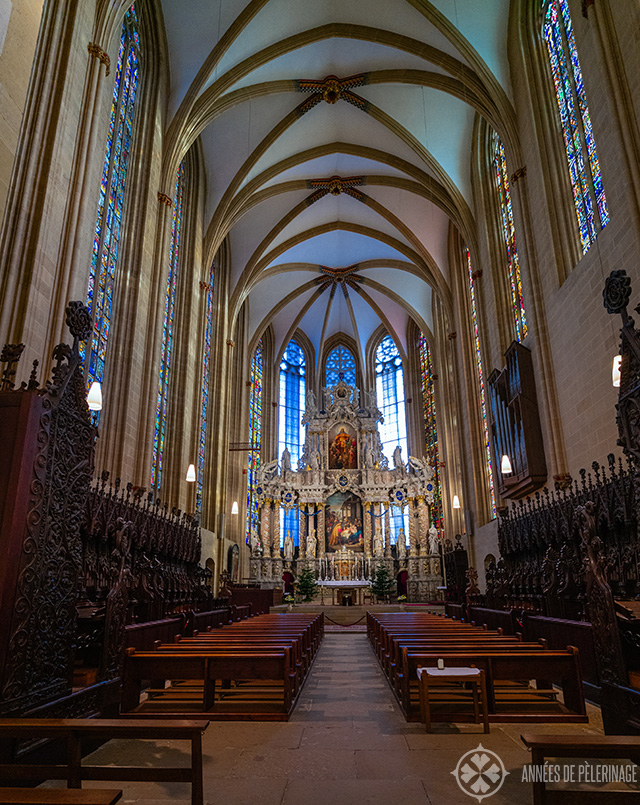
Erfurt Cathedral is home to the largest free-swinging medieval bell in the world (the so-called Gloriosa) and inside you’ll find one of the largest collections of late-gothic stained-glass windows as well. The impressive windows were created between 1370 and 1420. Since no bomb hit the cathedral during WW II, 895 of the 1100 single window panes are still originals from the medieval ages. The choir stalls are from that period as well!
You’ll find the Erfurt Cathedral on the so-called Cathedral Hill (Domberg) right in the heart of the city.
3. St. Severi
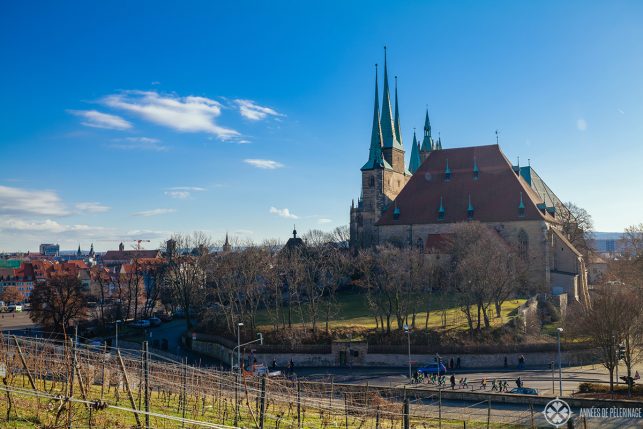
There’s another church abutting the mighty cathedral hill: St. Severi. Saint Severus of Ravenna was a bishop of Ravenna between 342 and 346 AD and the remains came to Erfurt in the 9th-century when the foundations for the first church were probably laid. This church was later razed by King Heinrich IV.
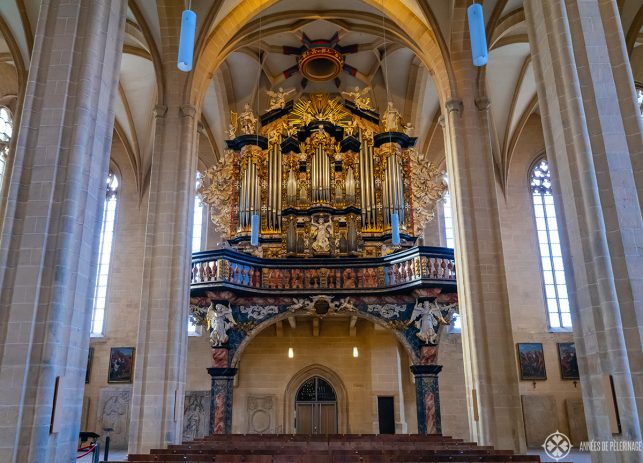
What you see today dates mostly to the 13th century. The iconic towers were only added around 1500 after another fire ravaged the church. Interesting fact: After Napoleon conquered Thuringia, the church was for sale. But because no buyer was interested, the church survived.
Personally I just love the mighty organ of the catholic church. The outstanding baroque housing was added in 1714 by Johann Friedrich Wender and is just beyond divine!
4. Petersberg Citadel
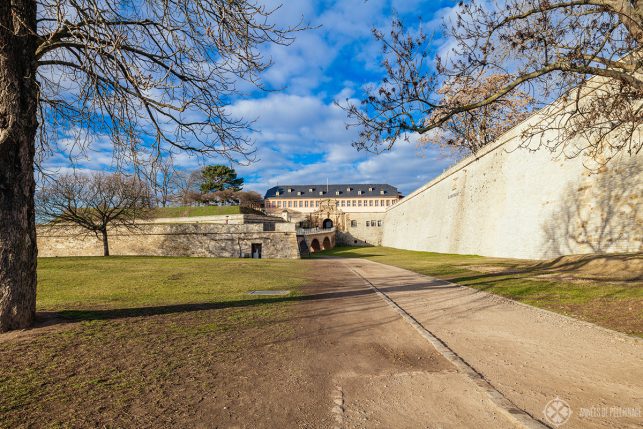
The Erfurt Citadel can trace its root back to the 5th millennium BC. The Celts, and later the Germans made use of the prominent hill. Starting from around the 9th century, it was turned into a monastery. The age of monastic use ended with the thirty years war when Erfurt was claimed by the prince-elector of Main and the Petersberg was turned into a mighty fortress.
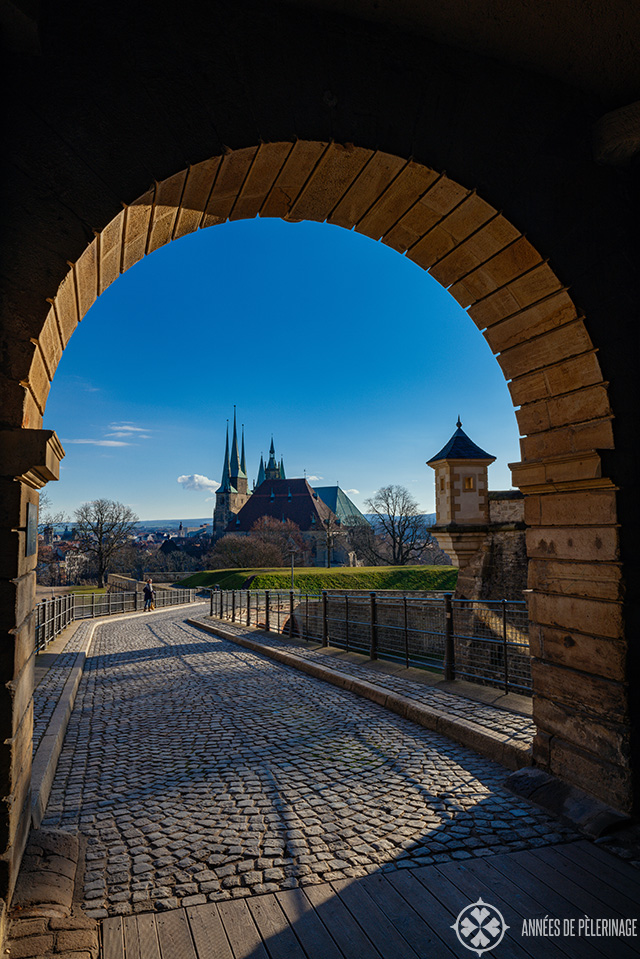
The citadel was continuously expanded between 1665 and 1831. There are plans to turn some of it into a museum and install a multi-media show. Definitely make sure to sip a coffee at the Glashaus restaurant. It’s the best viewpoint in the city if you ask me and it’s the perfect place to stop for a moment after exploring the old town.
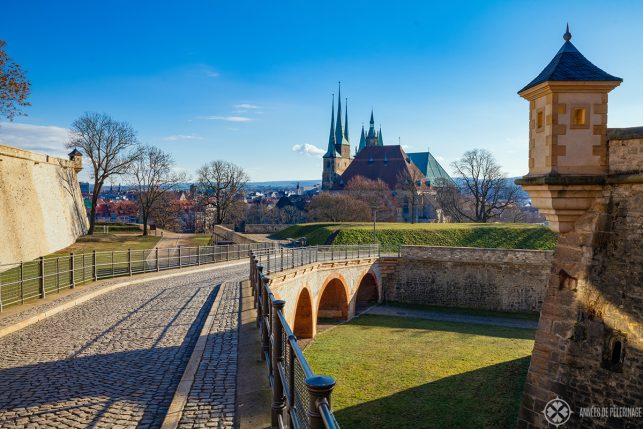
Note: The Petersberg Citadel is currently undergoing extensive renovation works which will last until 2021 when the famous Bundesgartenschau (biennial federal horticulture show) will take place in Erfurt.
5. Protestant Augustinian Monastery
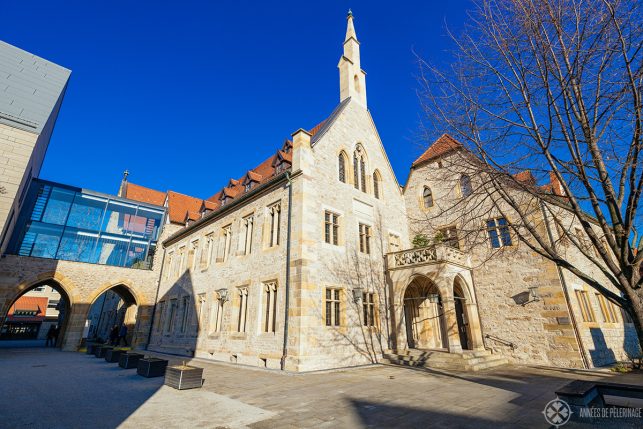
Martin Luther forever changed Christianity when he translated the bible into German, proclaimed his ninety-five theses, and thus induced the Reformation that would lead to a dramatic schism in the Roman Catholic Church. But did you know that Luther started his journey in Erfurt?
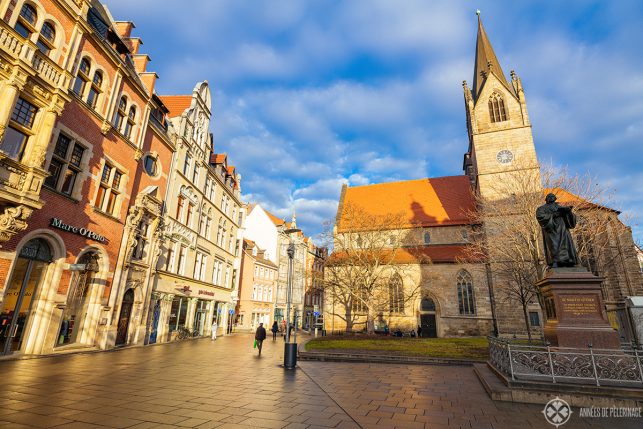
He started his training as a novice in the Augustinian Monastery in Erfurt and later started teaching at the Auditorium Coelicum. Today, you can still visit the very same monastery and even go on a tour to explore the inner cloister twice a day.
6. Old Synagogue
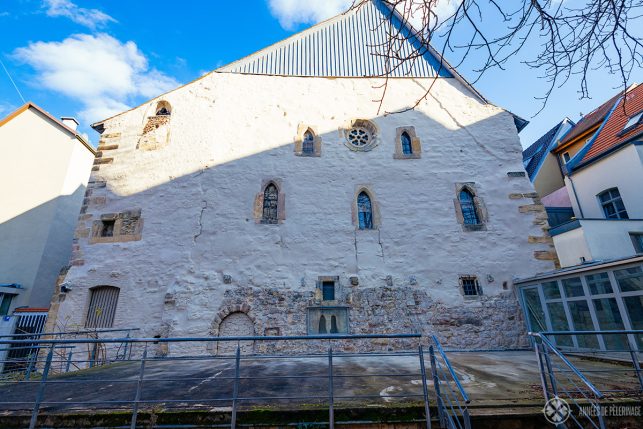
Probably the most fascinating place to visit in Erfurt is the Old Synagogue. It was turned into a museum in 2009 and documents almost a thousand years of Jewish presence in Thuringia. The oldest part of the buildings dates back to the 11th century which makes it the oldest synagogue in Middle Europe.
The Erfurt Synagogue was repurposed as a warehouse after the terrible pogrom in 1349, which is the reason why the foundations and walls remained.
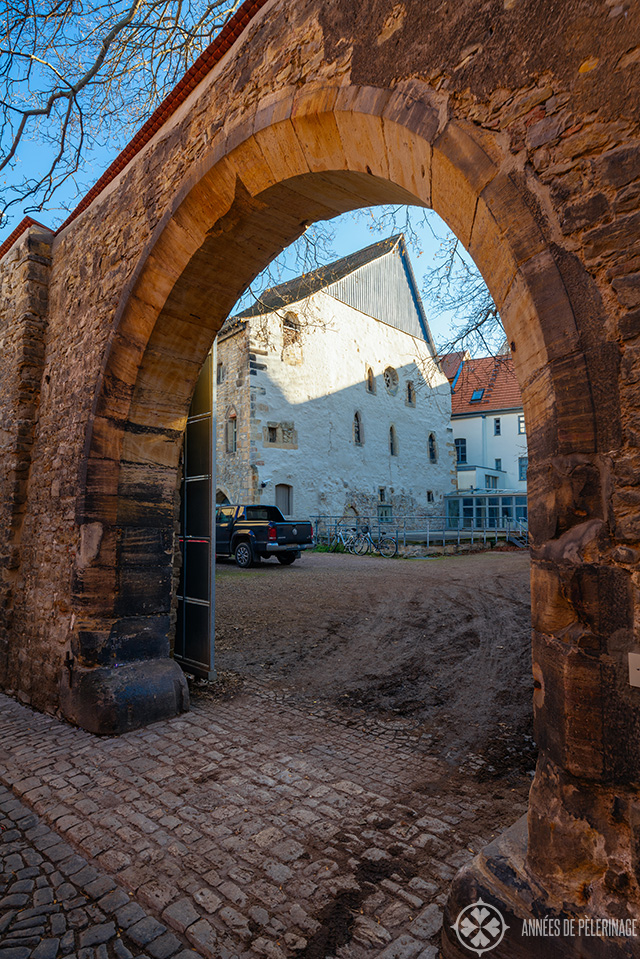
In 1998, archeologists found the famous Erfurt treasure hoard. Before the pogrom, a wealthy merchant buried his silver under a wall near the Synagogue and quite through a miracle it was never discovered. What makes the silver treasure so special is the fact that it dates back to the end of the 13 century.
It is a unique example of renaissance art. There is even an outstanding Jewish wedding ring from that time. You have to know that renaissance jewelry is beyond rare, as most of it was repurposed throughout the ages. To find a whole set of it, was quite unprecedented. (taking pictures of the treasure is not allowed)
7. Angermuseum
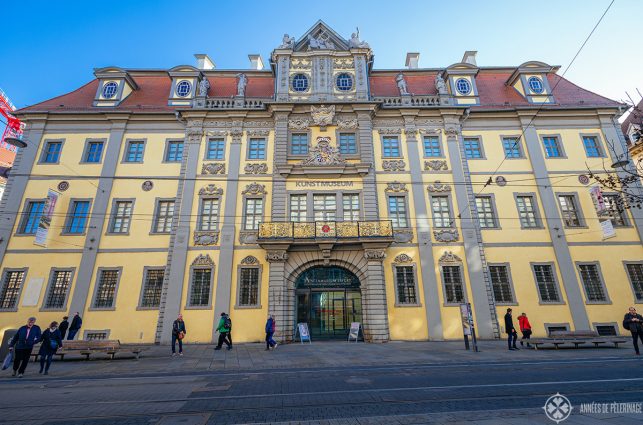
The Angermuseum is the largest and most prominent museum in Erfurt. You’ll find it in an imposing baroque city palais not far from the main square. It’s quite the lovely arts & design museum with a strong focus on artworks from Thuringia. It’s not particularly large, so you’ll probably just need an hour to visit it.
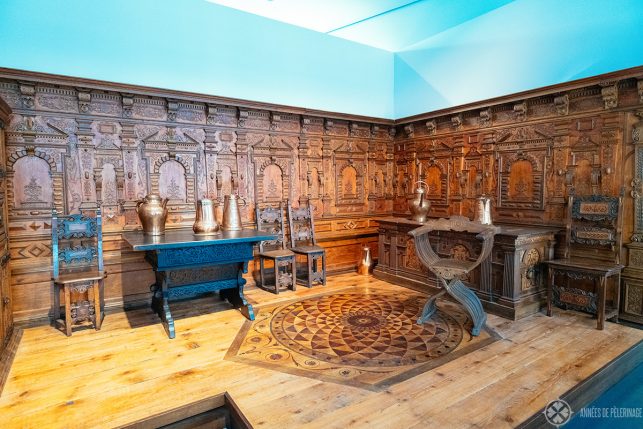
Personally speaking, I find smaller museums so much more charming as you really got the time to appreciate every exhibit. There are not only paintings, but also furniture, porcelain, and even contemporary jewelry. I particularly loved the renaissance apartment on the second floor.
8. Walking tour through the old town (door porn galore)
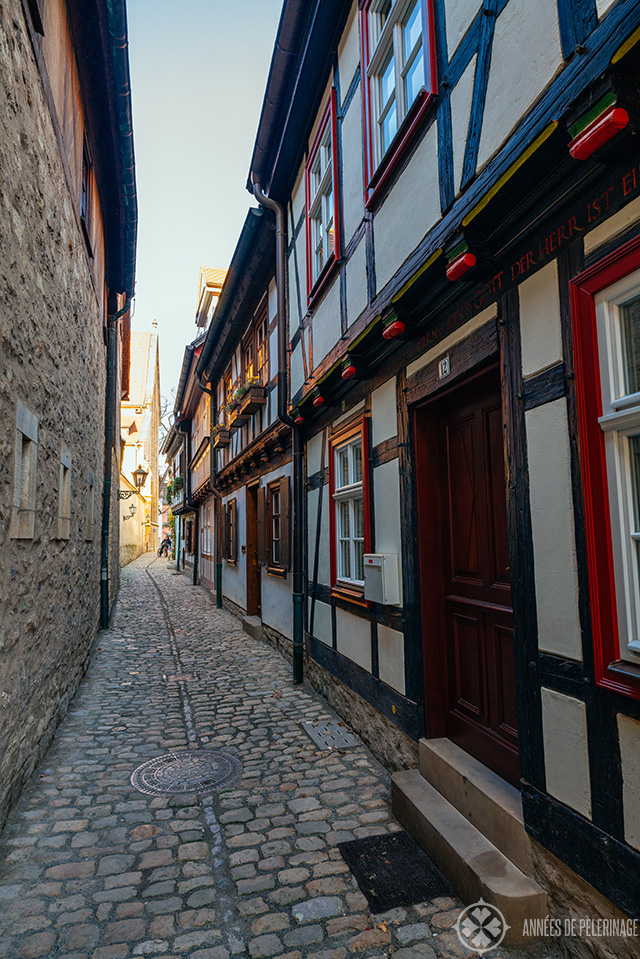
Don’t forget to reserve some time to explore the rest of Erfurt’s old town. There are some stunning places where it feels like walking through a fairy tale! The Kirchgasse is one of these places you absolutely have to see, but there are many more.
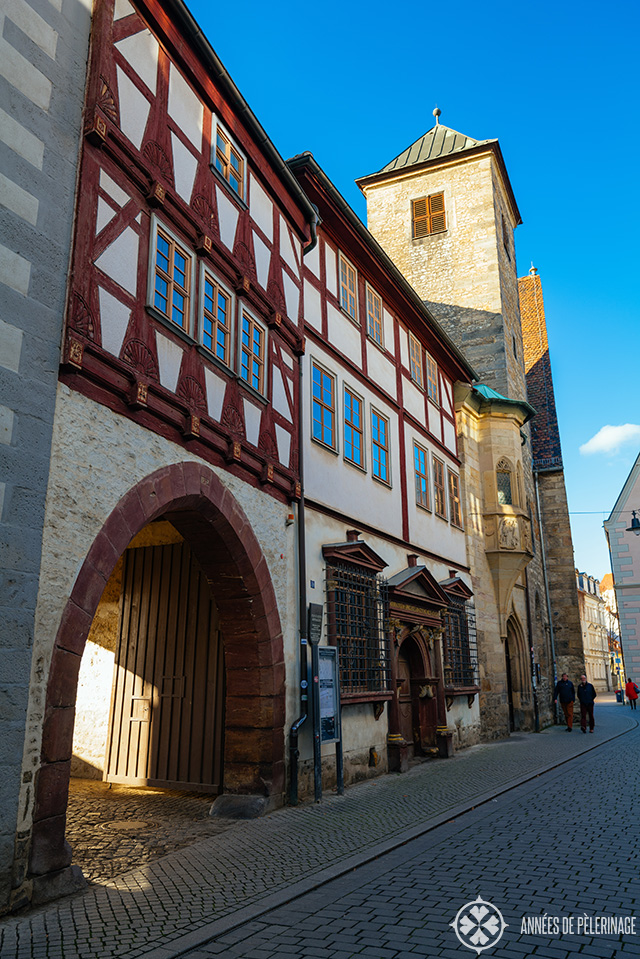
What I personally loved the most were the many beautiful old doors. Most of them have a little sign above the lintel which indicates the name of the place. You’ll see suns, fish and a panoply of other animals! Quite fascinating.
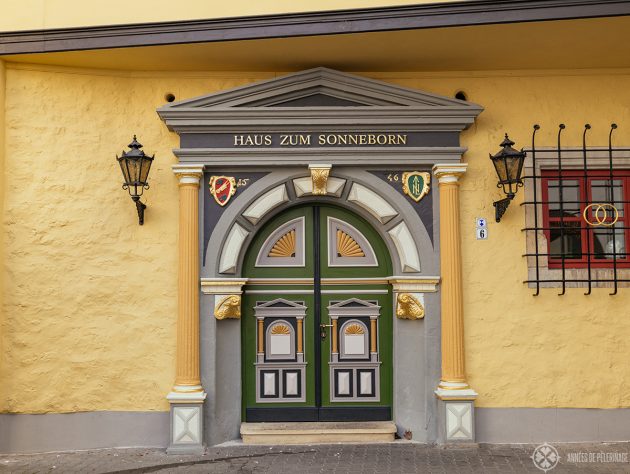
The House zum Sonneborn is also a tourist favorite. In fact, it’s a very popular wedding venue among locals and the door is beyond amazing.
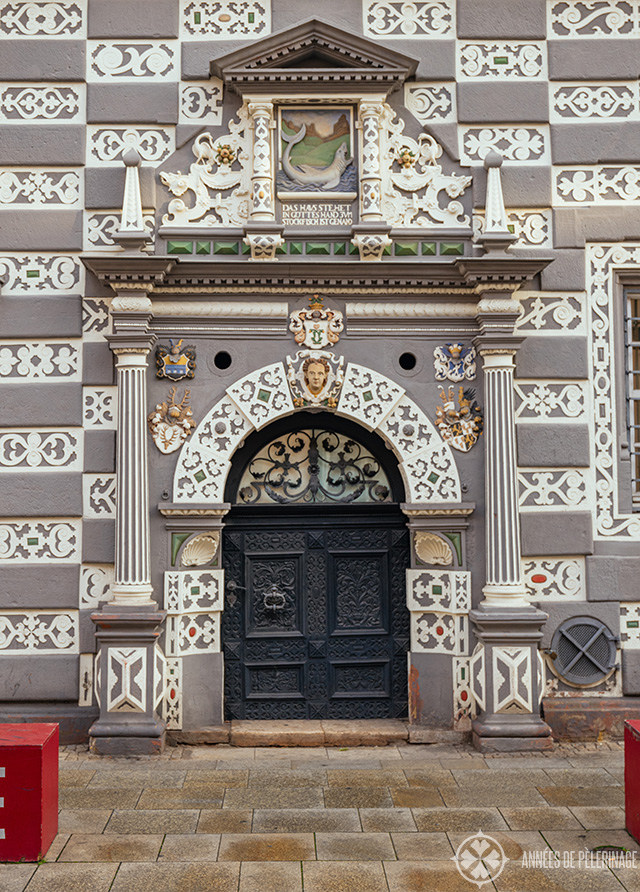
If I was serious about Instagram, then definitely consider exploring the many medieval doors of Erfurt.
9. Stadtmuseum Erfurt
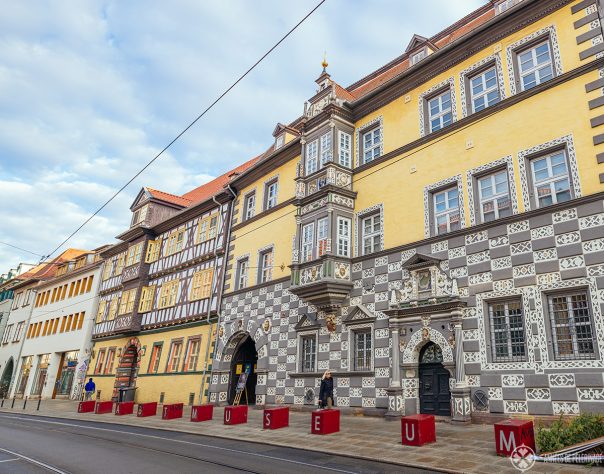
One of the lesser-known sites in Erfurt is the fabulous city museum. You’ll find it in the Haus zum Stockfisch which is a tourist attraction in and by itself. The ground floor of the museums is dedicated to the ancient history of the city, while you will find an exhibition of the more recent past on the second floor.
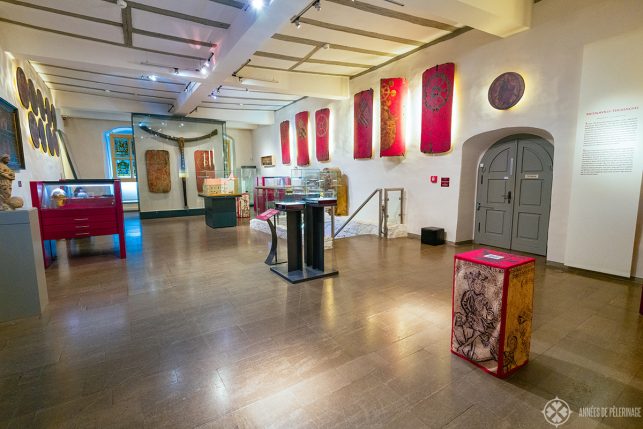
I want to be honest with you, though. It is not a world-class museum with a collection that will take your breath away. If you are short on time, you can skip it and will probably not regret it. But at the same time, the small museum does give you quite a vivid impression of Erfurt’s past. At the very least, you should at least walk past, as the facade is just so beautiful.
10. City Hall & Fish Market
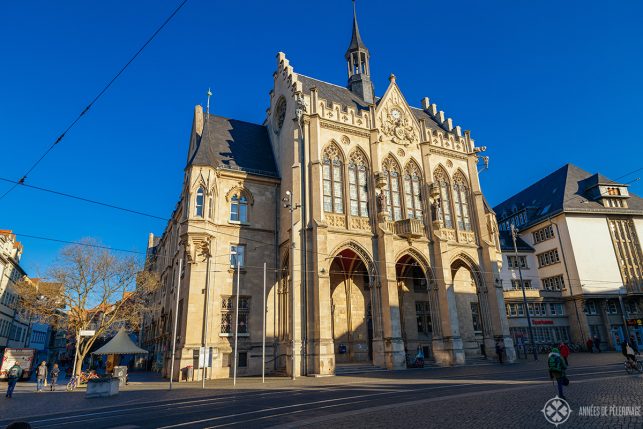
Last, but certainly not least, I would like to mention the beautiful Erfurt town hall. Don’t hesitate to go inside. It’s still a functioning town hall. There’s a big festival hall inside and the historic staircase is quite lovely as well! But don’t miss the other buildings around the Fischmarkt (“fish market” either.
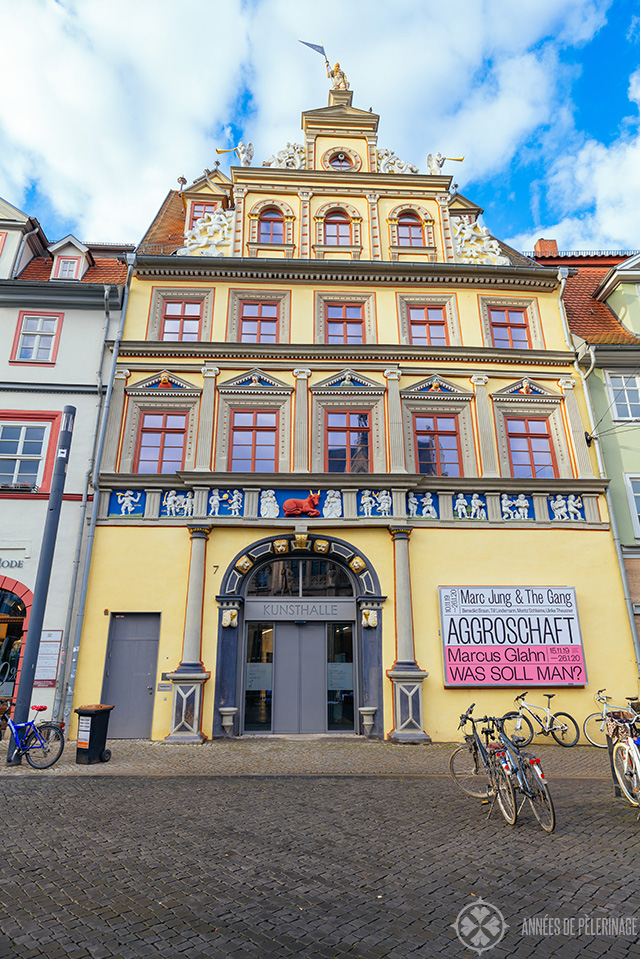
If you like contemporary art, the Kunsthall Erfurt (“art hall Erfurt”) might be a place you want to stop as well. It’s certainly not the Guggenheim Museum but I found it to be quite charming.
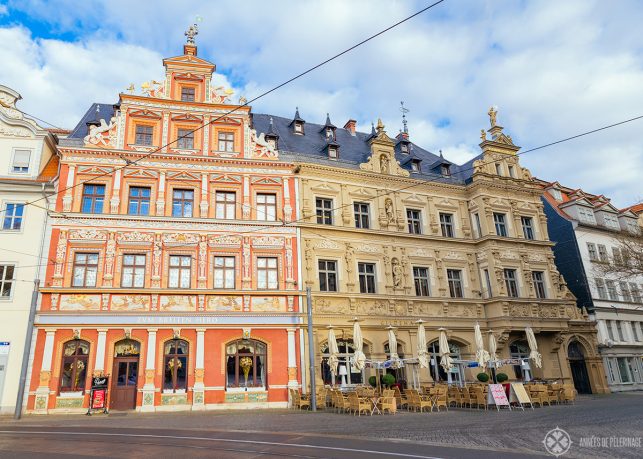
You will want to take a picture of the guildhall as well. Now, there’s an Italian restaurant inside. The food is only okayish, so I’d have lunch somewhere else. But the building is certainly beautiful!
Other things to do in Erfurt
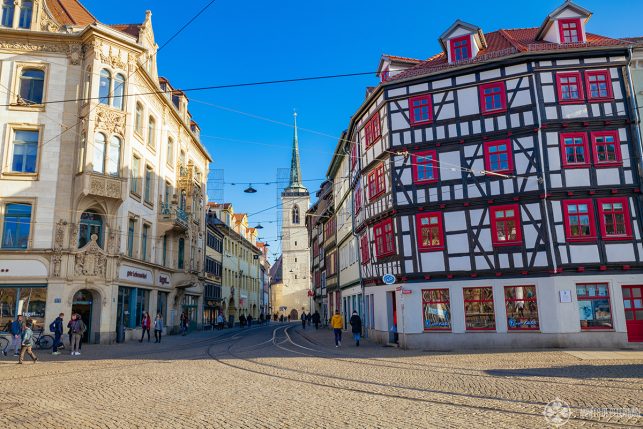
I want to be quite honest with you: There are not a lot of other places to visit in Erfurt. While the city does have quite an illustrious history it only became the capital of Thuringia in 1991. Nearby Weimar placed a far more important role throughout most of the state’s history. As such, the city is lovely but lacks the important highlights other state capitals (like Munich) have to offer.
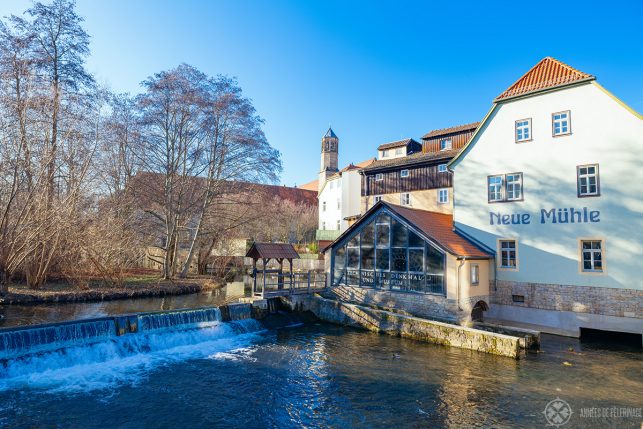
There is, however, a small natural history museum and you’ll find a tiny technical museum in the old mill.
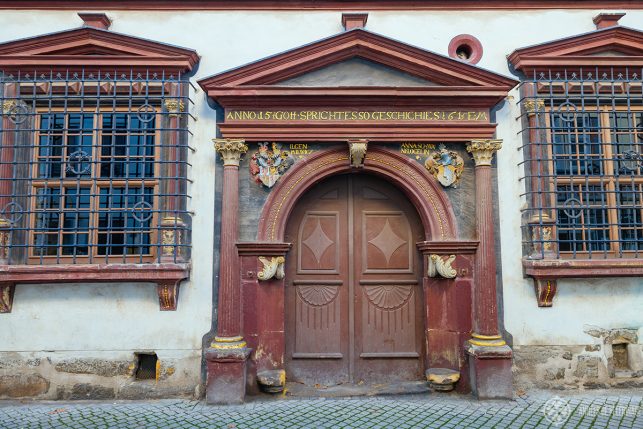
That being said, the city is beautiful and very clean. The people are friendly and the food is excellent. It is a very good alternative for longer Germany itineraries and as I said, you can combine it with a visit to Weimar and then move on to Dresden or Berlin.
How to get to Erfurt
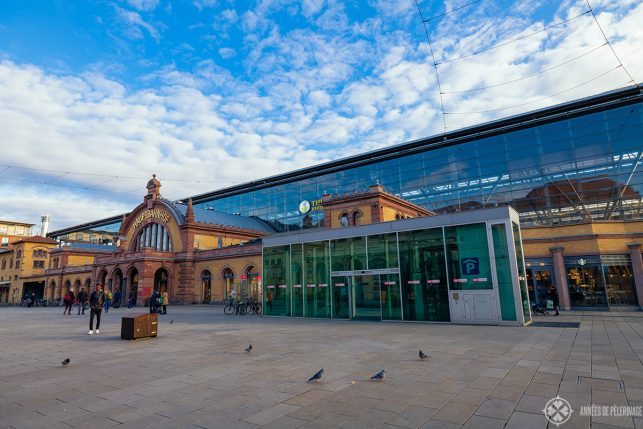
Getting to Erfurt really couldn’t be easier. There’s a high-speed train connection between Munich and Berlin, and Erfurt is one of the few stops on the way. It takes 2 hours 30 minutes to get there from Bavaria’s capital and only 90 minutes from Berlin. You can check the schedule on the official website of the German Railway.
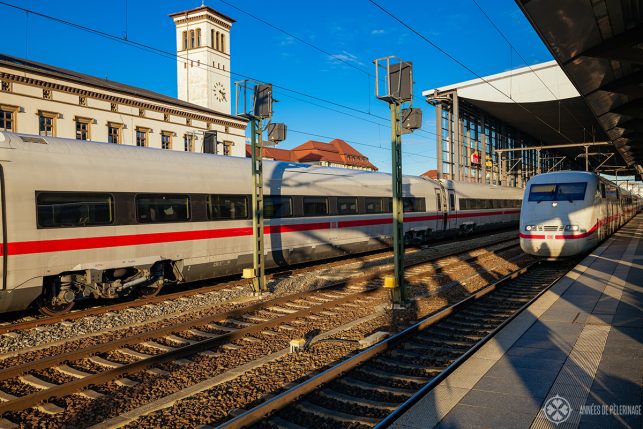
The connection is so good, that you can actually visit on a day trip from Munich (that’s what I usually do).
Where to stay in Erfurt
Note: I earn a small commission for purchases made through links in this article.
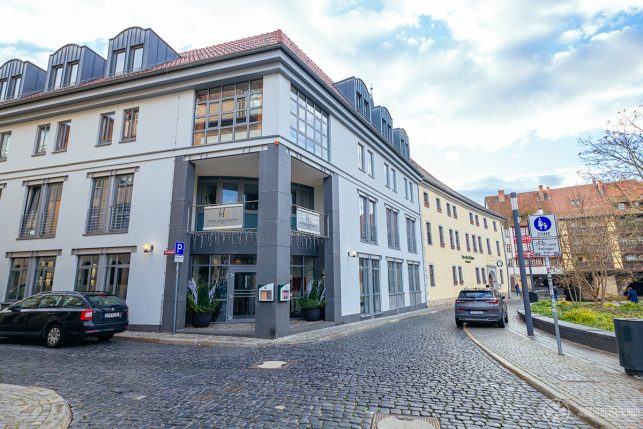
I usually stay in Weimar because the hotels there are much better. It only takes 30 minutes to Erfurt from there. As the city is much richer, I feel that this is where you should stay (I loved the Hotel Elephant). But there is no denying that sleeping in the capital has it’s advantages as well, especially if you want to enjoy some nightlife (Weimar is virtually empty at night).
Luxury hotels
- Dorint Hotel am Dom Erfurt (the only 5 -star hotel in town)
Mid-price hotels
- Hotel Krämerbrücke Erfurt (beautiful location)
- Mercure Hotel Erfurt
Budget hotels
Best time to visit Erfurt
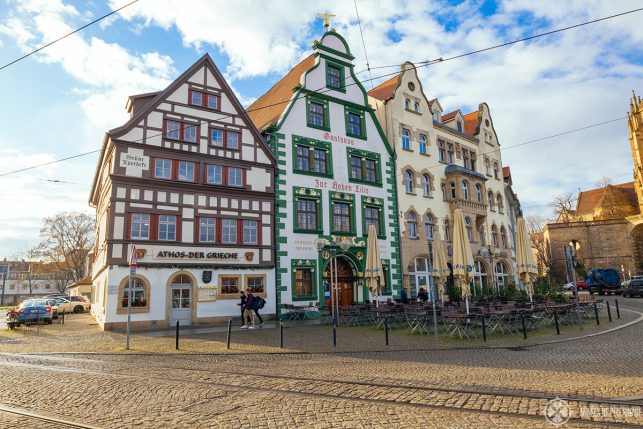
Erfurt is worth a visit all year round. It’s never really crowded and the old-town can be beautiful no matter the season. I’ve been there in winter and summer and was never disappointed. So, plan your Germany or Europe itinerary first, and Erfurt will fit in anyways.
There is just one thing you should know: Winter is really quite, so some tourist attractions are not open on weekdays (like the tower of the Aäigiden church, etc).
This is it. I hope I was able to show you the best things to do in Erfurt, Germany. Feel free to ask your questions in the comments below!
